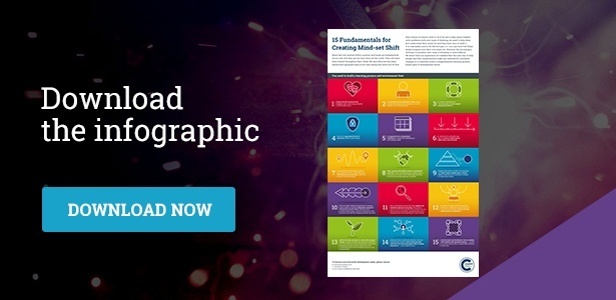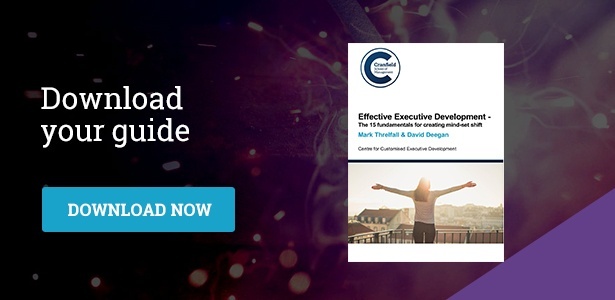
A distinctive part of Executive Development is the need to look at mind-set rather than just skills. Einstein is famously quoted as having said “We cannot solve our problems with the same thinking we used to create them.”
Whilst we all can, and should, learn new skills right the way through our lives, when we reach positions of senior responsibility within an organisation, the manner in which we approach business challenges becomes increasingly important. Rather than the focus being on what we do, it shifts towards how we initially think about issues before we even get to the point of taking action. Einstein is also quoted as saying “If I had an hour to solve a problem, I would spend 55 minutes defining the problem and then five minutes solving it.”
It has been shown that the ways that an individual person defines a problem, thinks through issues and challenges, interprets what they see, hear and feel, are all affected and impacted by that individual’s mind-set.
Mind-sets are centred within a person and make up fundamentals of not only who they are but how they see the world. They will have been formed throughout their whole life and often become deep seated and ingrained ways of not only seeing the world, but of how they choose to interact with it. So if we are to help senior leaders solve problems with new ways of thinking, we need to help them first understand their mind-set and then learn how to shift it.
It is reasonably easy to do the first part, i.e. run a process that helps leaders enquire into their own mind-set. However the second part, shifting it to produce new ways of thinking, is more difficult.
We know from our experience at Cranfield that the only way to help people and their organisations make any substantive, sustained changes is to carefully create a comprehensive learning process based upon 15 fundamental tenets.
You need to build a learning process and environment that:
- Works with the emotional and visceral, rather than being primarily intellectually driven
- Is connected to the individuals’ reality, which avoids them keeping the experience at ‘arm’s length’ or intellectualising it
- Is neither superficial nor ‘unchallenging' but has support mechanisms built in
- Allows for appropriate levels of disclosure within a safe setting
- Is supported over a longitudinal timeframe to enable the embedding of real changes made
- Is delivered in a blended way, and is a series of interventions rather than a one-off event
- Is an approach which hangs together into a coherent whole, representing the individuals personal journey, within the journey of the programme
- Has a process that builds a sense of camaraderie and trust. This is something only realised when a group goes through a very challenging and often emotional learning experience together
- Targets more than one layer of a hierarchy, and ‘glues’ layers together into a critical mass of experiences to facilitate a change in leadership climate.
- Does not take a sheep dip approach to manage large numbers. Instead, continually customises the journey of each cohort, adapting future modules based upon a cohort’s experience of the previous ones and the changing context they face.
- Has development processes that reignites the individual passion for learning. The process needs to move the individual from being someone who learns in an episodic, programmatic way to someone who views learning as a way of being
- Provides an opportunity to experience learning in a different, unstructured and emergent way thereby creating learning agility within the individual
- Affords the time and space to work with emergent themes. Copious activity and crammed timetables are often used as a way of attempting to guarantee learning outcomes, yet this approach can be counterproductive if the emergent issues are not explored fully
- Addresses how individuals interface with the organisation and how robust their personal network is for delivering against their strategic imperatives – social capital issues
- Is led by tutors and facilitators who are skilled with working with emergent themes…….as well as a client system that is comfortable working in this way
Learning Journey
When we work with our clients during the design phase, we ensure that we explore these issues fully so that we collaboratively create a learning journey built on these tried and tested foundations.
Our success from designing leadership programmes that bring about significant shifts in mind-set, and thereby effectively support leadership transitions, comes from working in partnership with our clients to embed these aspects into the learning journey.
If you'd like to read the "15 Fundamentals" in more detail, download this free guide





